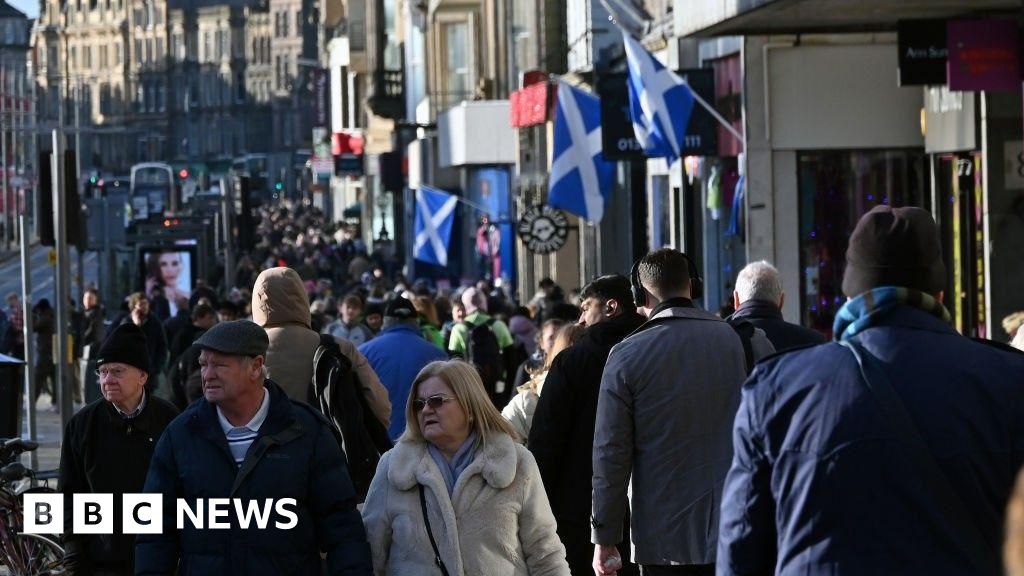World
The essential Edinburgh reading list

Britain’s Queen Victoria, during her first visit to Scotland in 1842, wrote in her journal: “The view of Edinburgh from the road before you enter Leith is quite enchanting; it is, as Albert said, ‘fairy-like’, and what you would only imagine as a thing to dream of, or to see in a picture.”
Edinburgh remains what it was then: “a mad God’s dream”, a city of cobblestones and culture, history and architecture, traditions and natural beauty, words and stories. Called a “hotbed of genius” by Scottish writer and surgeon Tobias Smollett, Edinburgh has always had literary leanings. This love for literature can be seen across the city: in 60 metre-tall monument in honour of Sir Walter Scott; the Writers’ Museum that celebrates the lives of three of the finest Scottish writers; the main train station named after Walter Scott’s Waverley; the Scottish Poetry Library that aims to transform people’s lives through engagement with poetry; the Scottish Storytelling Centre, which showcases Scotland’s culture year-round; and the many statues of writers that are part of the cityscape.
“Storytelling and literature have been a part of Edinburgh for centuries. Our rich and varied contributions to the world of literature led us to be recognised as the world’s first UNESCO City of Literature in 2004,” says Jen Cresswell, on a walking tour of literary Edinburgh.
The city has been home to some of the world’s biggest and most loved writers. “The big three are Robert Burns, Walter Scott, and RL Stevenson,” Cresswell says, going on to list the many others: “Muriel Spark, Julia Donaldson, Alexander McCall Smith, Ian Rankin, Kirstin Innes, Michael Pedersen, Nadine Aisha Jassat, TL Huchu, and, of course, JK Rowling.”
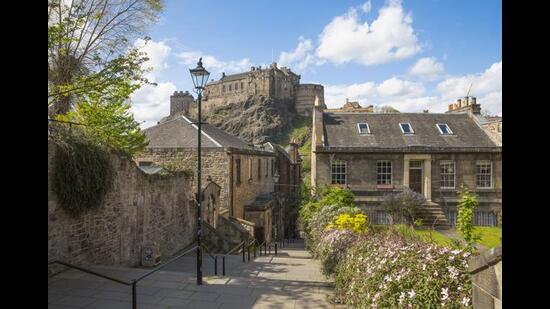
The culturally rich and diverse literary landscape has ensured that Edinburgh is today home to the highest concentration of public libraries in Scotland and a variety of bookstores.
“We celebrate our connection with books and authors with a variety of festivals. Apart from the Edinburgh International Book Festival, which began from a tent in 1983, we have other word-related fests: Porty Book Festival, Cymera Festival, Scottish International Storytelling Festival and Push the Boat Out. And of course, there’s the Edinburgh Fringe that’s grown as popular as the bookfest,” the guide says.
Described as the largest festival of its kind in the world, the Edinburgh International Book Festival celebrates the written word and literature, bringing together authors, thinkers, and people for a variety of public events. Along with the book readings and interviews, discussions, performances, and interactive events are part of the festival. The idea is to exchange views on social, political, cultural ethical, and literary issues.
Here’s a list of the best books about this very literary fairytale city:
Kidnapped by Robert Louis Stevenson
Born and educated in Edinburgh, Robert Louis Stevenson, one of the city’s most famous literary sons, has to his credit a range of novels: Treasure Island, Kidnapped, and The Strange Case of Dr Jekyll and Mr Hyde.
Kidnapped may well have been one of the first YA works. Written in English and Lowland Scots, the novel for boys was first published in a magazine from May to July 1886.
Set in Scotland just after the Jacobite rebellions, it is narrated by recently orphaned teenager David Balfour. He leaves rural Essendean and knocks on the door of his relatives, the Balfours of the House of Shaws. His miserly uncle Ebenezer confirms David’s suspicions about his dark nature when he sends him up a tumbledown tower in the dark, hoping the boy will plunge to his death. The greedy uncle ultimately gets the boy kidnapped and put on a ship to the Carolinas, but David escapes to the Highlands with the help of a Jacobite, Alan Breck Stewart. Together, they encounter danger, intrigue, and adventure.
When Edinburgh became the first UNESCO City of Literature, three versions of Kidnapped were made freely available – they were left in public places around the city. More than 25,000 copies of the novel were distributed that month.
A statue honouring Stevenson, through a depiction of David Balfour and Alan Breck Stewart, was in 2004 unveiled by Sean Connery on Corstorphine Road. The location is where the swashbuckling duo part ways once they reach Edinburgh.
“We came the by-way over the hill of Corstorphine; and when we got near to the place called Rest-and-be-Thankful, and looked down on Corstorphine bogs and over to the city and the castle on the hill, we both stopped, for we both knew without a word said that we had come to where our ways parted […] then we stood a space, and looked over at Edinburgh in silence,” Stevenson wrote to end the adventure novel.
The Prime of Miss Jean Brodie by Muriel Spark
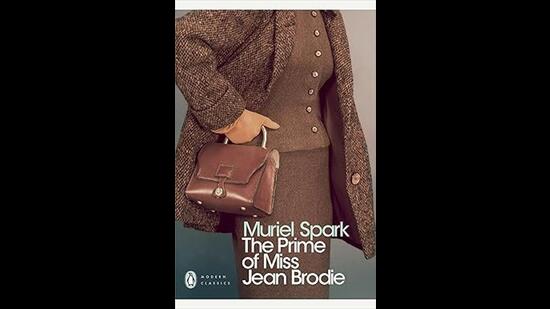
The Prime of Miss Jean Brodie is an extremely short novel, so brief that it was first published in the New Yorker. Macmillan released it in volume form in the UK in 1961, and the story of an eccentric Edinburgh teacher who inspires a cultlike veneration in her young charges went on to become Spark’s most famous work.
Ser in 1930s Edinburgh, the narrative nimbly goes backwards and forwards, beginning with a teacher “in her prime” and her education of six 10-year-olds, whom she singles out from their classmates at Marcia Blaine School as the “Brodie set”. “Give me a girl at an impressionable age,” she says, “and she is mine for life.”
Spark wrote the novel over a four-week period after she returned to her parents’ home in Edinburgh in December 1960. She drew on her own school experiences to fashion the charismatic character of Miss Brodie, who introduces “’the order of the great subjects of life … art and religion first, then philosophy; lastly science” to her girls. Alongside, her lessons also showcase her admiration for Mussolini and fascism, and include nuggets of her personal life.
The girls begin to thrive under “an Edinburgh festival all on her own”. “We of Edinburgh owe a lot to the French. We are Europeans,” she tells the girls in Grassmarket. However, one of the girls – the teacher never learns who – ultimately goes on to betray Brodie, ruining her teaching career. The novel, which explores themes of innocence, rationality, unchecked emotionalism, and betrayal, is a Scottish classic.
Trainspotting by Irvine Welsh
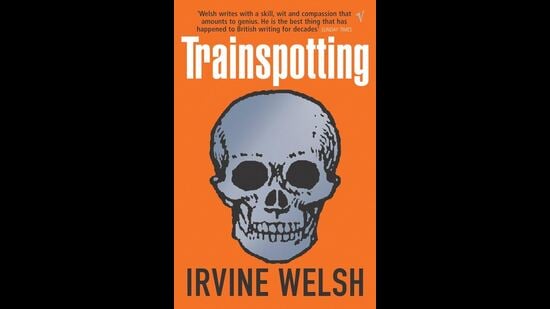
“Thir must be less tae life than this.” In his 1993 novel Trainspotting, Scottish writer Irvine Welsh brings us face to face with a clutch of unforgettable friends: Renton, Mother Superior, Sick Boy, Swanney, Seeker and Spuds, and their many highs and sudden lows as they traverse a drug-filled existence in 1980s Edinburgh.
Written in Scots, Scottish English, and British English, the novel focuses on a group from Leith, Edinburgh, and has been described by The Sunday Times as “the voice of punk, grown up, grown wiser and grown eloquent”.
It became a cult classic by exposing the hitherto hidden world of heroin highs, spotlighting the misery of addiction, and delivering a poignant social commentary via its oddball characters and their extremely provocative language. “Choose Life. Choose a job. Choose a career. Choose a family. Choose a fX#%X$g big television, choose washing machines, cars, compact disc players and electrical tin openers. Choose good health, low cholesterol, and dental insurance,” Renton says in his most popular monologue. “Choose your future. Choose life… But why would I want to do a thing like that? I chose not to choose life. I chose somethin’ else. And the reasons? There are no reasons. Who needs reasons when you’ve got heroin?” he ends.
Welsh said Trainspotting was “supposed to be a cautionary tale in some ways” but years on, “you can’t really see it that way anymore”. However, it remains a gritty account of a group of nonconformists navigating Edinburgh’s dark, drug-riddled, and nihilistic underbelly, exposing the high levels of drug abuse, unemployment, and urban decay that was characteristic of Edinburgh at that time.
Knots and Crosses by Ian Rankin
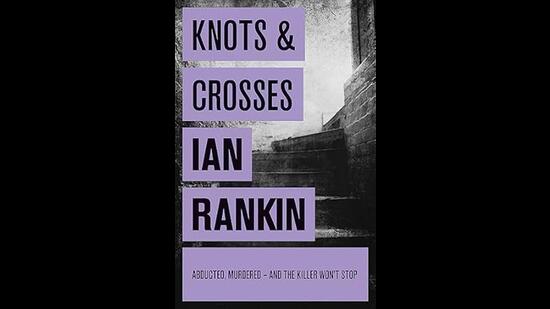
“And in Edinburgh of all places. I mean, you never think of that sort of thing happening in Edinburgh, do you…?” Ian Rankin wrote his first crime novel, Knots and Crosses, as a student at the University of Edinburgh, drawing on his own experiences to pen the first of the Inspector Rebus novels.
Rebus, who smokes and drinks much more than is good for any human being, must resolve “that sort of thing” – the abduction and murder of two young girls. When a third one goes missing, Rebus, who misses his own daughter taken away by an unhappy wife, joins the many cops hunting the killer. But he realises that only he can solve the puzzle when the clues start arriving: knotted string and matchstick crosses.
Rankin’s Edinburgh has a dual personality – it is stately, elegant, and cultured, yes, but it’s also a “schizophrenic city” of rude young men, of sordid bars “the tourist never sees”. In a 2005 introduction to Knots and Crosses, the author said “rereading the book now, I find myself blushing at the number of literary puns and references … Rebus himself is too well read, quoting from Shakespeare and passionate about Dostoevsky. He thinks like the student/novelist who created him, rather than a real cop.”
In the Inspector Rebus novels, the “king of tartan noir” showcases the Jekyll and Hyde character of this gorgeous city: the splendour and squalor. Edinburgh is a character as well, its “brooding presence providing a subtext to the stories”.
One Good Turn by Kate Atkinson
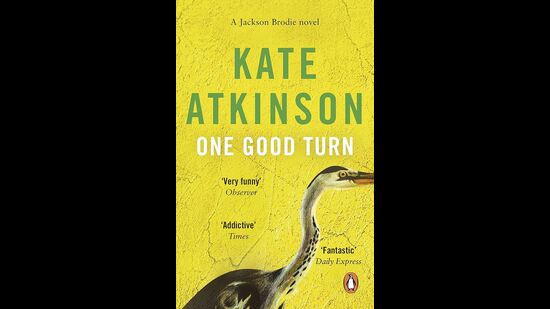
Edinburgh resident Kate Atkinson famously said that it wasn’t possible to “write a novel about happy people having happy lives” as “tis so much misery around”. She’s known for creating Jackson Brodie, the archetypal hard-boiled detective with a tragic childhood, an elegiac outlook, and a series of divorces.
The second book in her Brodie series is a twisty murder set during the Edinburgh Fringe. A crowd of festival-goers witnesses a brutal road-rage incident – a Honda driver exiting his car to batter a Peugeot driver with a bat. That sets off a wave of murders and leaves Brodie to deal with a strange cast: a crime novelist, a comedian, a Russian woman, a has-been comedian, and a female police detective. What role has this motley group played and will the detective be able to figure out whodunnit?
The novel also shines the light on Edinburgh: “The rain had in no way deterred the crowds – it had never occurred to him that Edinburgh was in the middle of the Festival and that there would be carnival hordes of people milling around as if the end of a war had been declared.”
“He ended up in the dirty heart of the city, in a street that somehow seemed to be on a lower level than the rest of the town, a blackened urban ravine. The rain had left the cobbles slick and greasy and he had to drive cautiously because the street was teeming with people, haphazardly crossing over or standing in little knots in the middle of the road, as if no one had told them that roads were for cars and pavements were for pedestrians,” she continues in a humorous vein. She may not be describing the elegant city that visitors love, but it is Edinburgh for sure!
Teja Lele is an independent editor and writes on books, travel and lifestyle.




